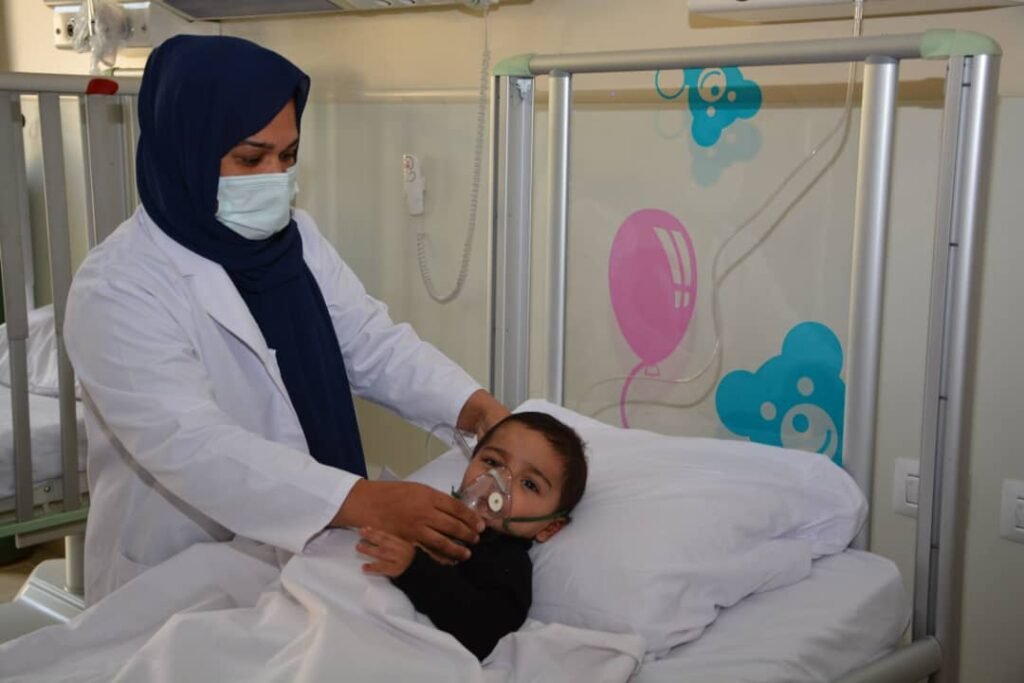Introduction to the Nephrology and Hemodialysis Service at Shaheed Sardar Mohammad Dawod Khan Hospital

Introduction: The Nephrology Department at Shaheed Sardar Mohammad Dawod khan Hospital includes a Hemodialysis Center equipped with 7 dialysis machines and a central RO system, along with 11 active beds. Established in 2009 (1388 in the Solar Hijri calendar), this department operates within the Internal Medicine Service and has been recognized as a scientific and research institution. Over the past 15 years, it has provided invaluable services in treating patients, training medical staff, and advancing nephrology research within the Armed Forces Academy of Medical Sciences, affiliated with the Ministry of Defense.
This service is not only dedicated to treating nephrology patients but also actively participates in the care of inpatients from other departments, including the ICU, and consults on cases requiring nephrology and hemodialysis expertise. The staff’s commitment to round-the-clock service ensures the highest standards of patient care.
Additionally, the Nephrology and Hemodialysis Service is proud to be Afghanistan’s first of its kind. Since its inception, it has been actively involved in the education and training of doctors, nurses, and technicians, many of whom have gone on to serve in various hospitals, including the Police Hospital, the National Security Hospital, and the Regional Hospital Hemodialysis Center in Kandahar.
Human Resources and Equipment:
The Nephrology Service comprises:
- A Chief of Service: Colonel Dr. Khan Alam Ashrafi, a specialist in nephrology trained in Russia and Armenia.
- Two specialist doctors: Major Dr. Mujib Rahman Zazai and Major Dr. Qais Durrani.
- A head nurse: Captain Safiullah Hazem.
- Four assistant doctors and dialysis technicians.
- One department trustee and three support staff.
The service operates in two main areas: the inpatient treatment section and the Hemodialysis Center, which features seven dialysis machines, an RO water system, and emergency resuscitation equipment.
Hemodialysis Indications: Hemodialysis is indicated for:
- Acute kidney failure unresponsive to conservative treatment.
- Chronic kidney failure to prevent complications like uremic pericarditis, pleurisies, uremic encephalopathy, and fluid overload.
- Metabolic disturbances and electrolyte imbalances such as hyperkalemia, hyperkalemia, hypocalcaemia, hypophosphatemia, and metabolic acidosis.
- Uncontrolled hypertension unresponsive to medication.
- Certain cases of drug poisoning.
Treatment of Patients through Hemodialysis:
Hemodialysis treatment is provided in two forms:
- Chronic dialysis for patients with chronic kidney failure.
- Acute dialysis for patients with acute kidney failure, electrolyte disturbances, or drug poisoning.
Procedure and Activity Guidelines:
- Preparation for Hemodialysis:
- Ensure access to adequate blood flow via Central Venous Catheters or AV Fistulas/Grafts.
- Prepare the hemodialysis machine, RO system, and patient for the procedure.
- Administer Heparin to prevent clotting during dialysis.
- Execution of Hemodialysis:
- Procedures are carried out under strict aseptic conditions.
- Duration varies based on patient needs, ranging from 3 to 7 hours daily for acute kidney failure or 3 to 4 hours thrice weekly for chronic kidney failure.
Achievements and Future Plans:
From 2009 to June 2024, the department treated approximately 30,000 patients, performing over 13,701 hemodialysis procedures. Additionally, the department has made significant contributions to medical education and training, consistently upgrading its services to meet international standards.
Future Plans:
- Conduct AV Fistula surgeries in-house to improve patient convenience.
- Expand nephrology services in collaboration with hospital management.
- Revise educational curricula and treatment protocols to align with the latest medical standards.
- Launch a kidney transplant program.
- Initiate a nephrology subspecialty training program and expand hemodialysis centers to all regional hospitals.
The report concludes with appreciation for the leadership and staff of the Nephrology Service, whose dedication has been instrumental in achieving these milestones.
